Table of Contents Show
For decades, audiences of all ages have watched the beloved yellow bear named Winnie the Pooh tumble down many hills, attempt to solve many head-scratching mysteries in the Hundred Acre Wood, and consume copious amounts of honey onscreen. The Walt Disney Company first adapted author A.A. Milne’s 1920s stories about the adorably naïve Pooh bear, his furry friends, and Christopher Robin in 1966 with the animated theatrical featurette entitled Winnie the Pooh and the Honey Tree. Nearly one hundred years since Pooh’s inception and over fifty years after that first adapted animated short, Disney has produced dozens of hours of Winnie the Pooh television and film content. Identifiable and tremendously talented voice actors lent their voices to the characters for decades.
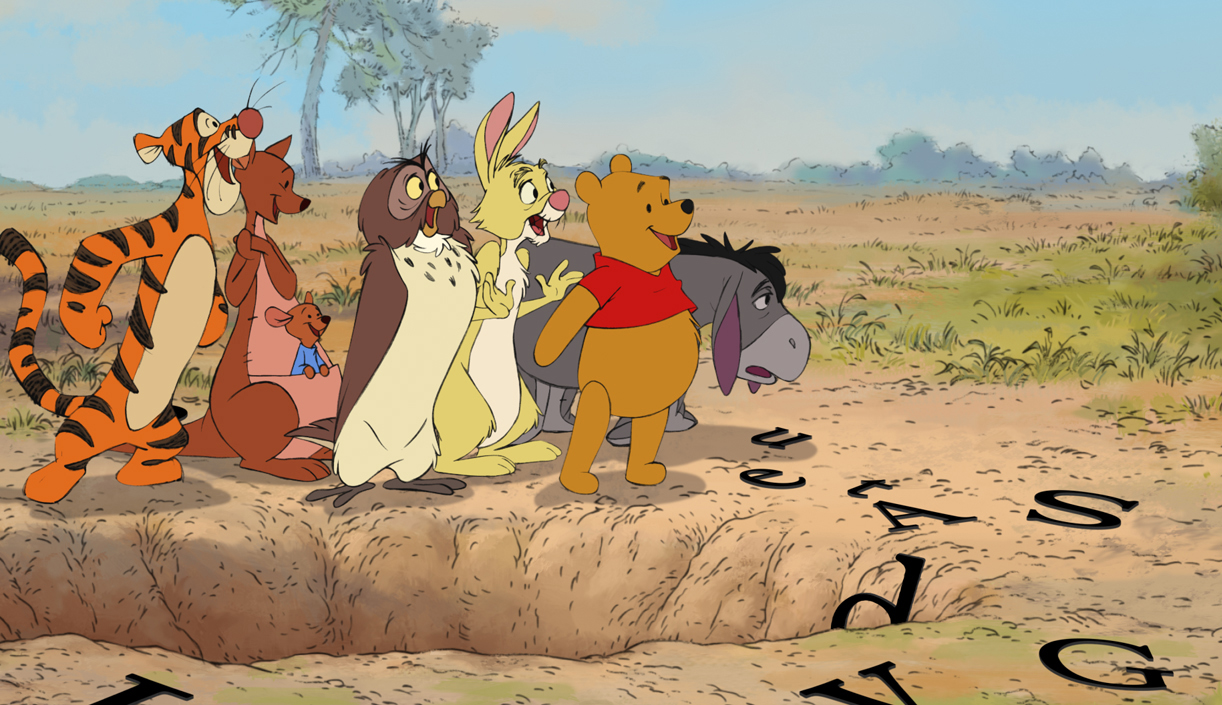
Winnie the Pooh is known for his endearing aloofness and being a bear of “very little brain.” His genuine earnestness and compassion for his friends Piglet, Christopher Robin, Tigger, Owl, Eeyore, Rabit, Kanga, and Roo continually charms viewers. Not only does the Pooh franchise promote positivity and wholesome television/movie content, but it also fosters a sense of adventure and teaches upstanding moral lessons. The flexibly drawn and brightly rendered character designs of Pooh and his crew are visually delightful and embody artist E.H Shepherd’s book illustrations. Breezy landscape backgrounds are simplistically rendered with watercolors on series like “The New Adventures of Winnie the Pooh,” providing a clear depiction of seasons and the England-inspired forestry of the Hundred Acre Wood.
Winnie the Pooh content is vast and evergreen, featuring characters celebrating several holidays and enduring new challenges that arise with the changing seasons. Additionally, because of the far-reaching span of time since Winnie the Pooh first graced the screen, the shows and movies also appeal to a wide age demographic, due in part to childhood nostalgia. The whimsical world of Winnie the Pooh is regularly punctuated by playful — or poignant — orchestration soundtracks and sometimes tunes sung by the animals themselves. Many holidays are universally celebrated each year, and Winter always turns into Spring. So this will provide recommendations for fuzzy, silly atmospheric Winnie the Pooh audio-visual content about that silly old bear you can enjoy year-round.
‘Tis The Pooh Season!
Winnie the Pooh films and television series boast watercolor-infused scenery to depict the Hundred Acre Wood. Therefore, pastel colors and loose-lined brushstrokes are paramount in depicting the changing seasons. Although the artists use sparse linework, the mixed autumnal colors of the forestry or bare branches laden with snow during the winter supplement the seasonal settings in Pooh media. These elements provide viewers with necessary visual cues that remain fully immersive. In fact, as a whole, backdrops in “The Many Adventures of Winnie The Pooh” excel in complementing the plots of the many special seasonal episodes.
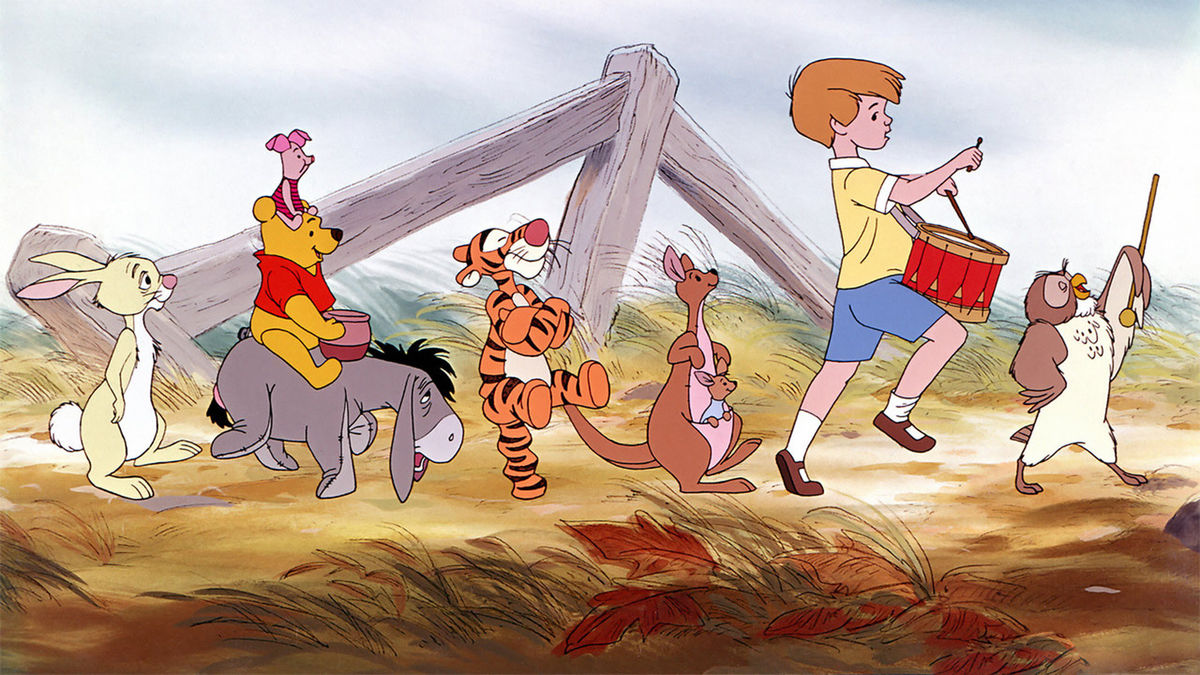
While there are many season-specific episodes and movies starring the rumbly tumbly bear and his friends, a few longer films exhibit more than one season throughout the longer runtimes. The Many Adventures of Winnie the Pooh (1977) is a conglomeration of the original Pooh shorts from the 1960s-70s with added scenes to cohesively merge the featurettes together. The non-specified seasonal setting of Winnie the Pooh and the Honey Tree (1966), the obvious fall season of Winnie the Pooh and the Blustery Day (1968), and the snow-drenched woods seen in Winnie the Pooh and Tigger Too (1974) construct a sensation of traveling through all the seasons in the 1977 anthology film. Additionally, an uplifting scene where Christopher Robin mentions his departure for school soon rounds out the seasonal film by implying that summer is drawing to a close.
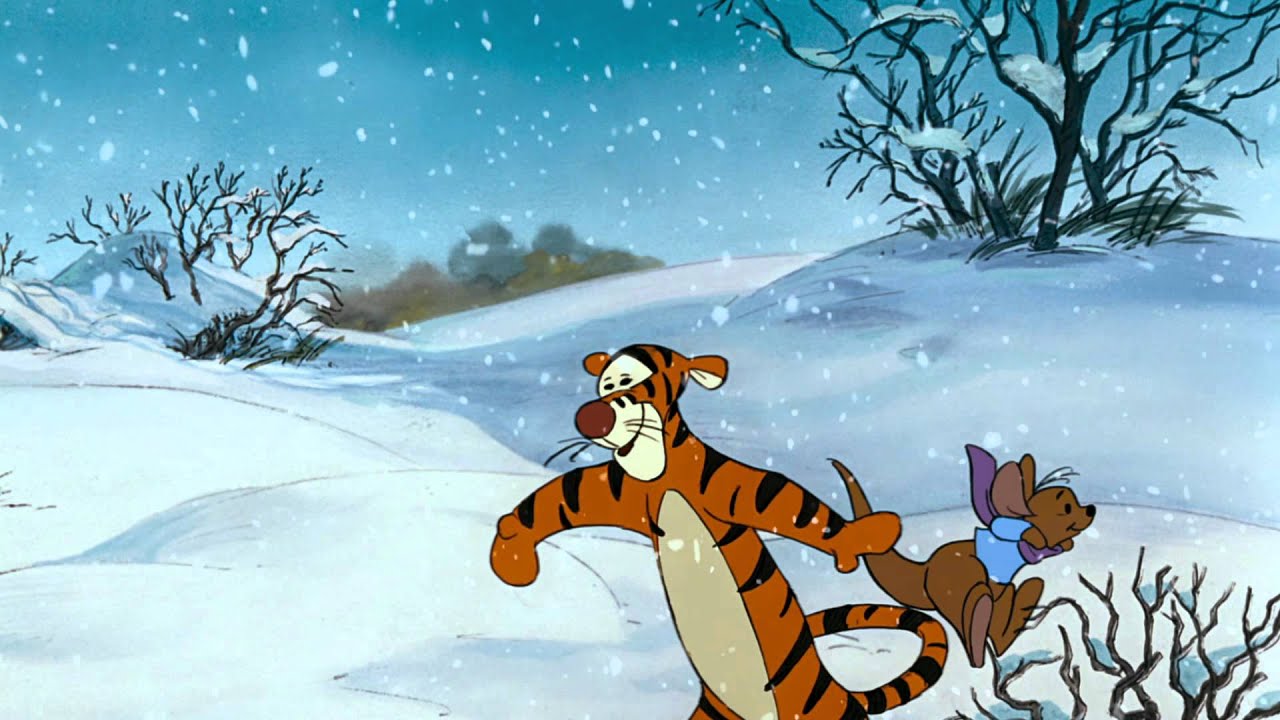
The Tigger Movie (2000), the first full-length Pooh movie released in theatres containing all original content, also traverses two differing seasons. During the film’s opening, Tigger desperately invades everyone’s home in his search for a bouncing companion before the upcoming Winter. During his endeavor, leaves continually dance toward the ground around the Hundred Acre Woods, signifying the beauteous conclusion to Fall. The wispy, muted colors of orange, red, and gold incite comforting undertones of the season. Eventually, Tigger’s quest to locate his family does not go as quickly as planned, and the snowfall outside manifests Winter’s arrival. Snowflakes patter onto tree limbs, and snow coats everyone’s houses in the latter half of the film. Witnessing Tigger and Roo’s almost familial-like relationship will remind viewers of the homely aspect of the cold seasons.
The Many Adventures of Winnie the Pooh and The Tigger Movie films can be labeled as akin to rollercoaster rides. The effervescent movies may invite yearnings for your favorite seasons. If you’re pining for a Pooh movie or episode of “New Adventures” to accompany only the current season, the featured content below is all available at the touch of a button to watch with a Disney+ subscription.
The Winter Adventures Of Winnie The Pooh
Apart from the winter setting utilized in The Tigger Movie, two episodes of “New Adventures” can be delineated as winter season distinct. Tonally and thematically resembling The Tigger Movie, Winter’s approaching date in Season One, Episode Four, “Find Her, Keep Her,” is communicated through a more solemn plot. When a snowstorm puts a baby bluebird in danger, Rabbit selflessly acts to save the helpless creature. Although Rabbit is the most persnickety and irritable character on the show, he lends a piece of his heart to the bird named Kessie, taking care of her and ultimately adopting her as his own. Over the year, Rabbit undergoes the familiar stressors of parenthood but promises never to let any harm come to Kessie. But Kessie dreams of flying south for the winter. Owl and the others secretly teach Kessie to fly while Rabbit struggles to prevent Kessie from leaving him. The episode portrays each season focusing on Winter and intriguingly introduces a protective character trait to Rabbit.
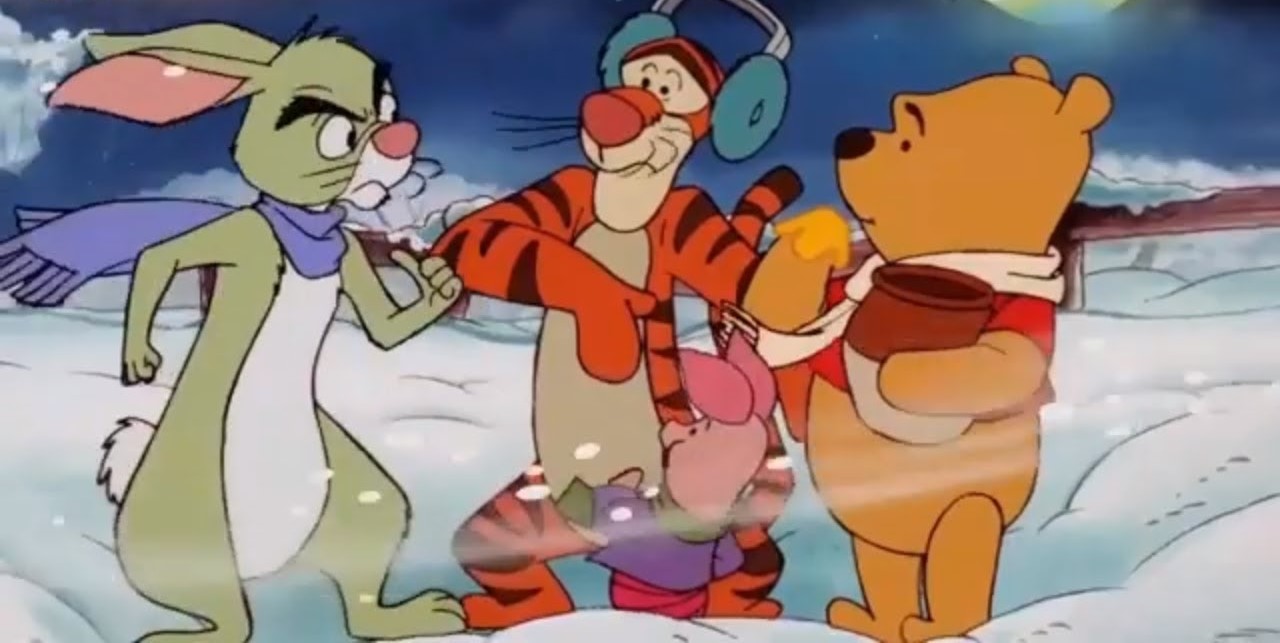
A much more jovial story set in the Hundred Acre Woods occurs during Season One, Episode Fifteen of “New Adventures” in the episode segment, “Magic Earmuffs.” Christopher Robin’s mom reminds him to wear his earmuffs before he ventures out into the snow to go sledding and ice skate with Pooh and the others. The ever-fearful Piglet is ashamed that he cannot skate and join his friends in an enthralling ice hockey game. Without hesitation, Christopher Robin and the animals abandon their game to help teach Piglet how to ice skate so he can be included in the festivities. Nothing proclaims “winter” like the episode’s presentation of snow, skating, and precious outfits the animals wear to keep warm during the frosty season! Impressive animation sequences of the characters performing quick-paced skating techniques on the ice and tumbling in a realistic-looking show offer a grand portrayal of winter.
Springtime With Pooh
The obvious springtime-related Pooh media is the eponymously titled, Springtime With Roo (2004). As described above, the film does take place during the spring season but maintains a heavy focus on the Easter holiday. But several “New Adventures” series episodes could arguably also be set during springtime. If the birds are chirping outside, flowers are opening their petals in beautiful blossom, and you’re looking for something short and breezy to watch while you start Spring cleaning, turn on the second segment of Season Three, Episode Nine from “The New Adventures of Winnie the Pooh.”
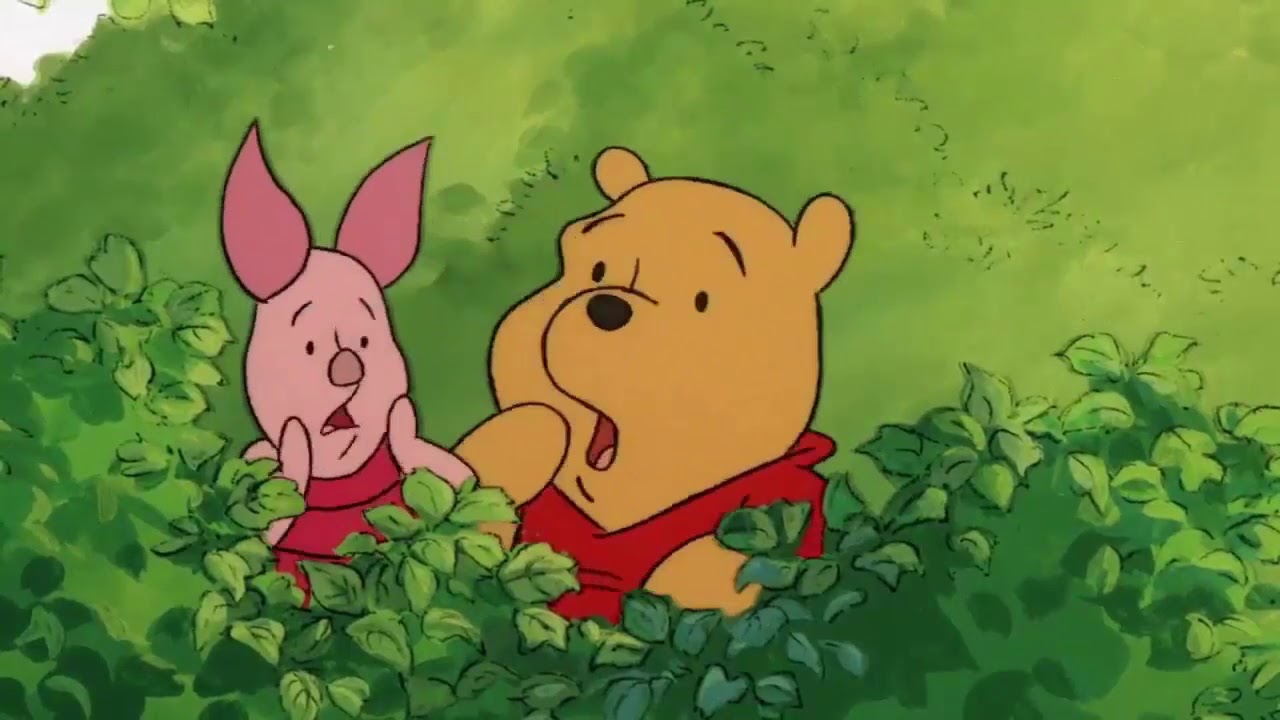
In “Invasion of the Pooh Snatcher,” the furry friends participate in various activities outside on the Spring day. Pooh contently rests in his sleepy spot when Tigger bounds in to warn everyone about the impending “Jagular” invasion. Spring is the Jagular’s favorite time of year to “spring out” without warning, after all! After hearing the news, Piglet retreats into his home and says he won’t return until Fall. Tigger bounces off, but when he returns, he notices a Pooh-shaped indent in the grass where Pooh had been lounging — but no Pooh! Tigger believes the Jagular snatched Pooh. Thus, Tigger heads a Pooh-hunt for the missing bear. Vivid green backdrops and the springtime setting make this a pleasing spring season watch.
A Summer Spent With A Silly Old Bear
Fantasy, comedy, and the allure of the world of Pooh combine in the breathtaking live-action/CGI animated film Christopher Robin (2018). Scenes to represent the Hundred Acre Wood were literally filmed in the UK’s Ashdown Forest — the exact location that A.A. Milne based the setting on in the Winnie-the-Pooh books. The film deservedly received an Academy Award nomination for Best Visual Effects. The landscape-concentrated shots and softly-rendered CGI effects of the stuffed animals evidence the sumptuous care that went into producing the film.
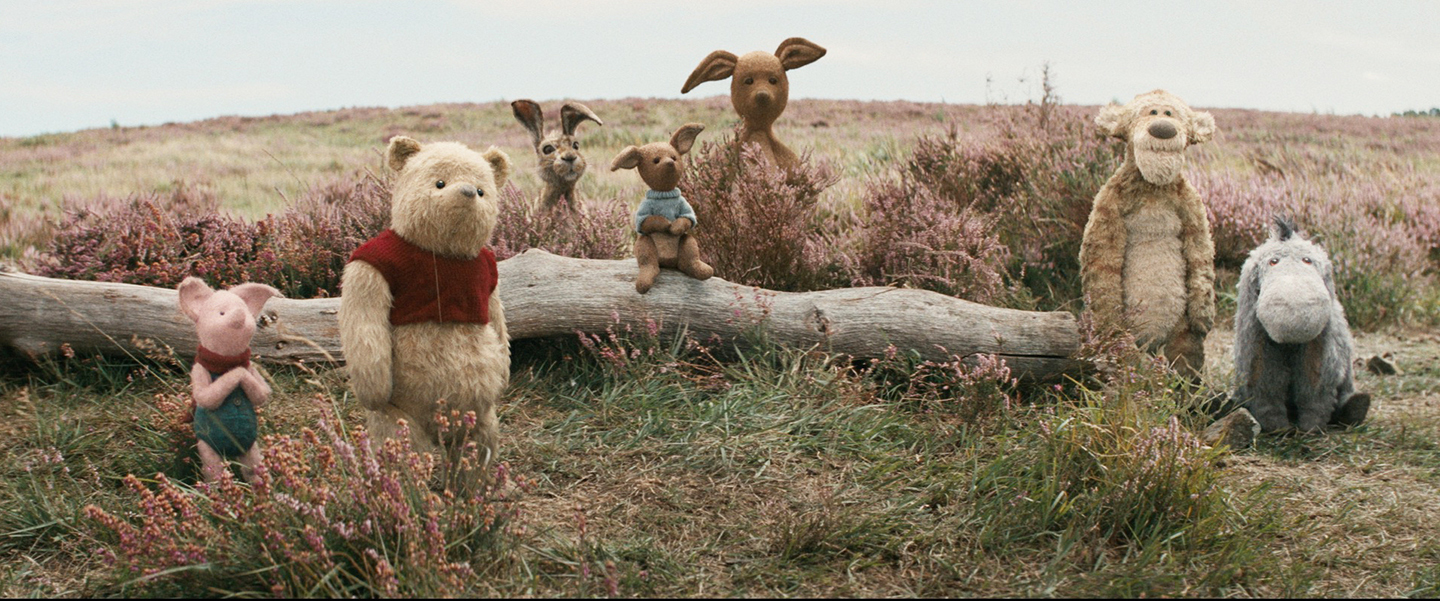
A grown-up Christopher Robin (Ewan McGregor) returns to his hometown in Sussex after confronting an animate version of the toy bear from his childhood — Winnie the Pooh. Meanwhile, Christopher Robin’s wife and daughter are already vacationing in his summer home while he had stayed behind to solve the inconceivable task of figuring out who to fire from his job to cut expenditure costs. His daughter is intelligent but neglected by her father, already having finished her schoolwork for the incoming fall semester. The summer-ending weekend results in a gentle awakening for Christopher Robin as Pooh, Piglet, Tigger, and his old stuffed friends teach him to re-center his focus in life back on what he should hold most dear: his family. Every line of dialogue, the congenial voice of Jim Cummings’ Pooh, and the picturesque scenery of the UK’s summer’s end build a perfect live-action film with thematic complexity and little to critique.
Winnie The Pooh Flies Into Fall
A short but charming “New Adventures” episode completely espouses the end of summer or beginning of fall aura of childhood whimsy. In the second segment of Season Two, Episode Seven, Pooh avails himself of the windy weather and engages in the fall-appropriate activity of flying a kite with Christopher Robin in “Up, Up, and Awry.” Pooh’s curiosity and enjoyment lead him to posit a simple thought: It would be nice if he could fly! Pooh utilizes every resource available to him as he experiments with hilarious flight methods for his round, honey-filled, bear body.
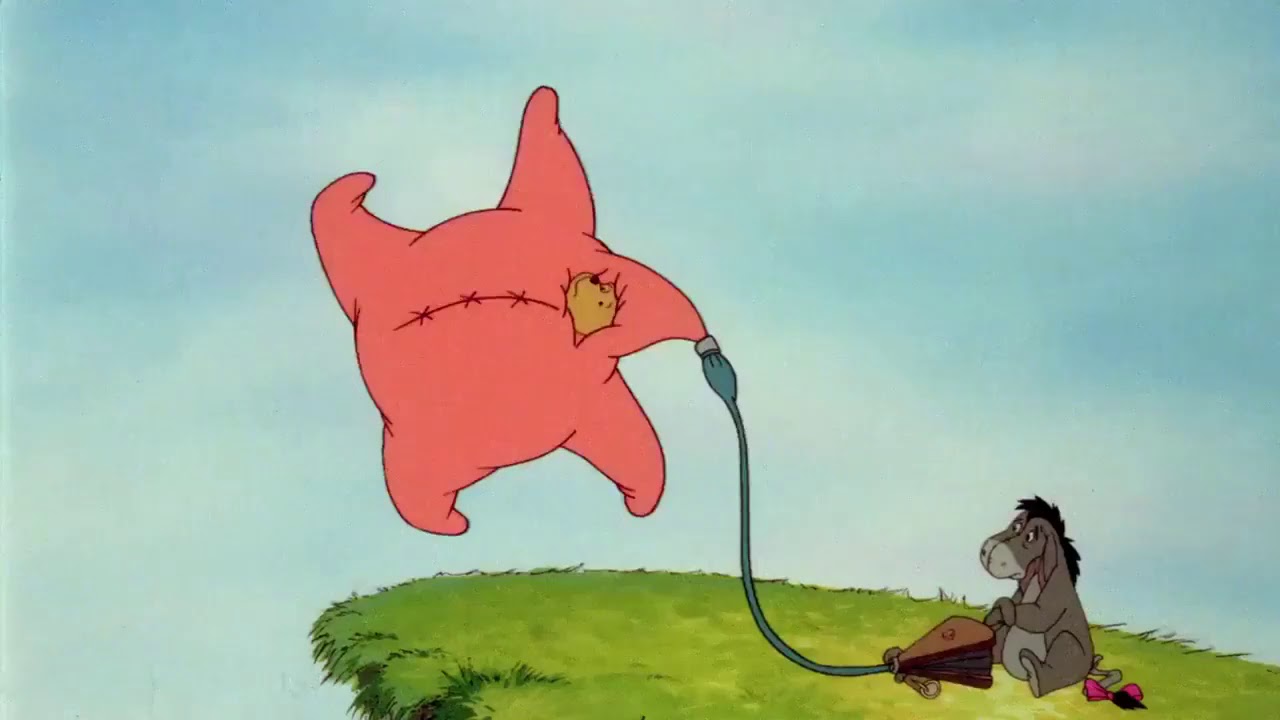
Illustrated clothing designs, like Pooh’s famous aviator goggles or oversized roller skates, manufacture phenomenal visuals. This episode enforces the fact that you couldn’t imagine any voice actor alive but Jim Cummings voicing Pooh. Take flight with Pooh as he nonsensically tries to break the law of gravity on a windy fall afternoon.
Celebrate The Holidays In The Hundred Acre Wood
Oh, bother! Is it already Christmas again? Perhaps you’re planning on spending Valentine’s Day evening eating honey and winding down with some television. Did you tap your head and “think, think, think” hard about what pranks you should add to your April Fool’s Day repertoire? The New Adventures of Winnie the Pooh episodic show and the slew of holiday-themed Pooh movies outlined below are guaranteed to put you in a holiday mood — for fun and even for food!
Groundhog Day
“The New Adventures of Winnie the Pooh” animated television series, which ran from 1988 to 1991 and is available to stream on Disney+, remains the most popular and highly successful Winnie the Pooh property to date. “Groundpiglet Day,” Season One, Episode Twenty-Five of the show endows Piglet with the spotlight. Piglet’s behavior acts as the episode’s thematic catalyst during the February 2nd holiday setting episode. Groundhog Day isn’t necessarily a day that garners much notoriety — unless you live in the city of Punxsutawney and have a huge celebration bash every year.
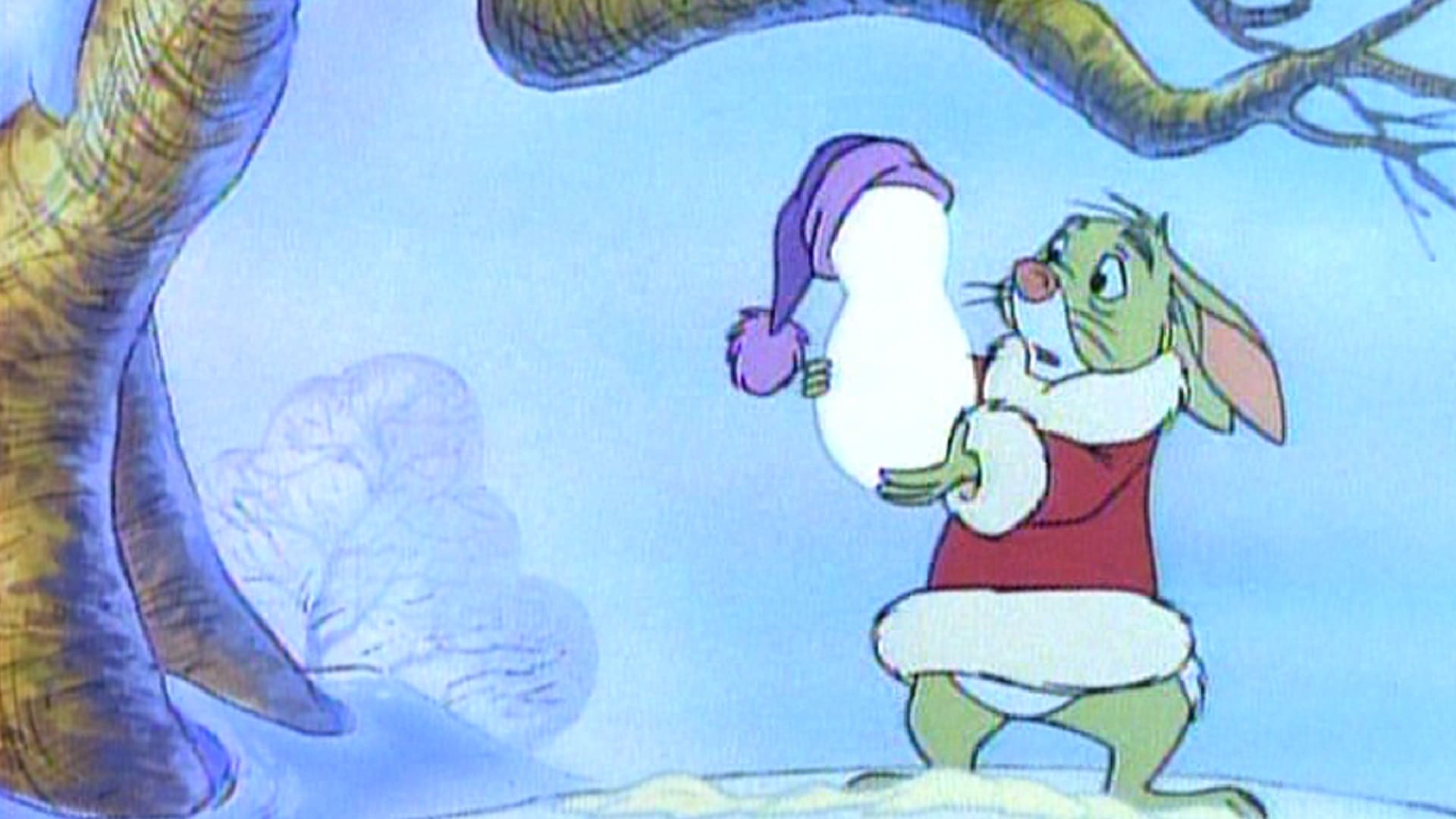
Still, the episode segment captures the character-driven poignancy that makes the show so adored. Piglet is forced to take the groundhog role of the holiday, so the other animals know whether his shadow indicates the coming of Spring. Piglet’s personality trait of fearing his friends’ disapproval and a delighted smile hidden beneath a groundhog-inspired mask in the segment illuminate a suburb representation of Piglet’s character. There’s a hilarious twist during the midpoint of the episode that might make “Groundpiglet Day” an appropriate Thanksgiving seasonal viewing as well.
Valentine’s Day
Valentine’s Day is a day spent with a loved one — or loved ones, as joyously represented in Season Two, Episode One of New Adventures, “Un-Valentine’s Day.” Feeling agitated over the haunting memories of the prior’s years’ Valentine’s Day card fiasco, Rabbit enacts a ban on any card exchange for the holiday. Unfortunately for Rabbit, Pooh Bear, implicitly responsible for the overwhelming amount of Valentine’s Day cards that flooded the Hundred Acre Wood last year, begins the card-gifting cycle anew after finding an unmarked card on his doorstep. This episode wholly embraces whimsy, sparkling red and white colors and the atmosphere of love that couples with Valentine’s Day. The dialogue between Pooh and Piglet will bring you to tears. Additionally, Pooh cleverly masquerades as a mailbox, and the illustrated farce is as charming as it sounds.
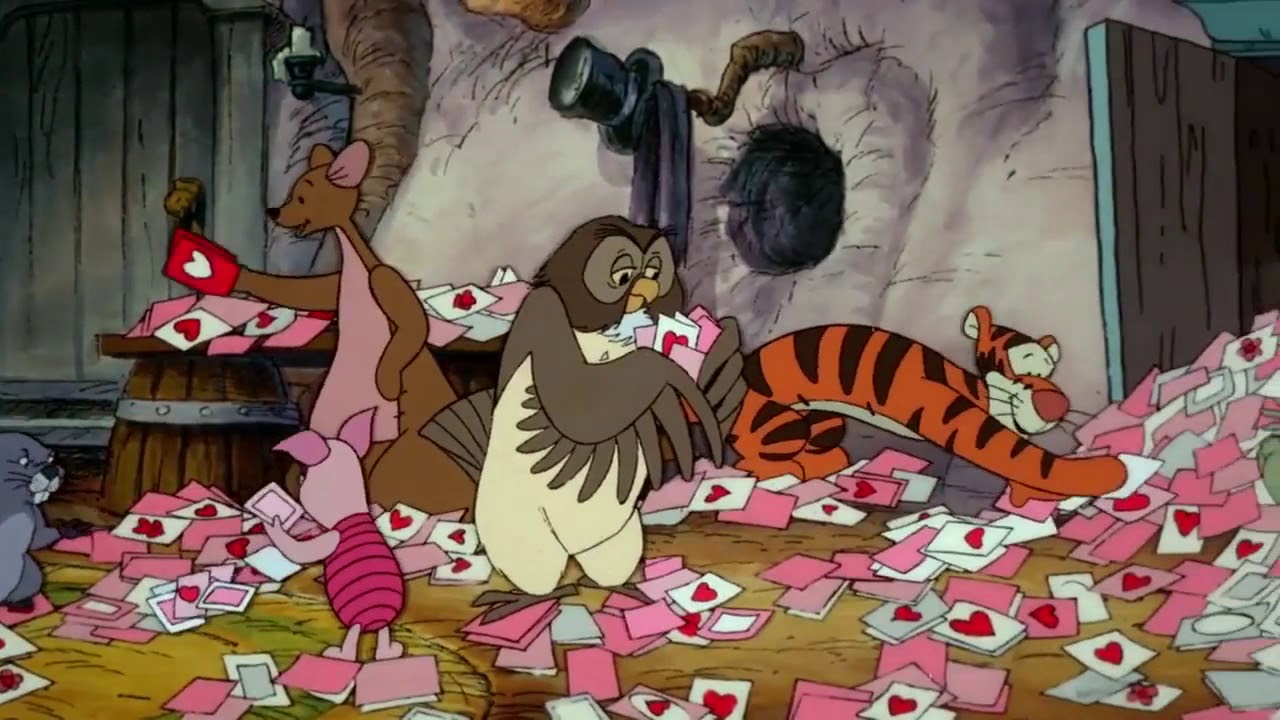
Another Pooh Valentine’s Day feature, 1999 special, Winnie the Pooh: A Valentine For You, is only available to stream through a rental purchase. The holiday sentiment remains, but the limited availability of the twenty-two-minute special may deter prospective viewers. Thankfully, your Disney+ subscription grants you easy access to streaming the tear-jerking Valentine’s Day episode of “New Adventures” on February 14th instead.
St. Patrick’s Day
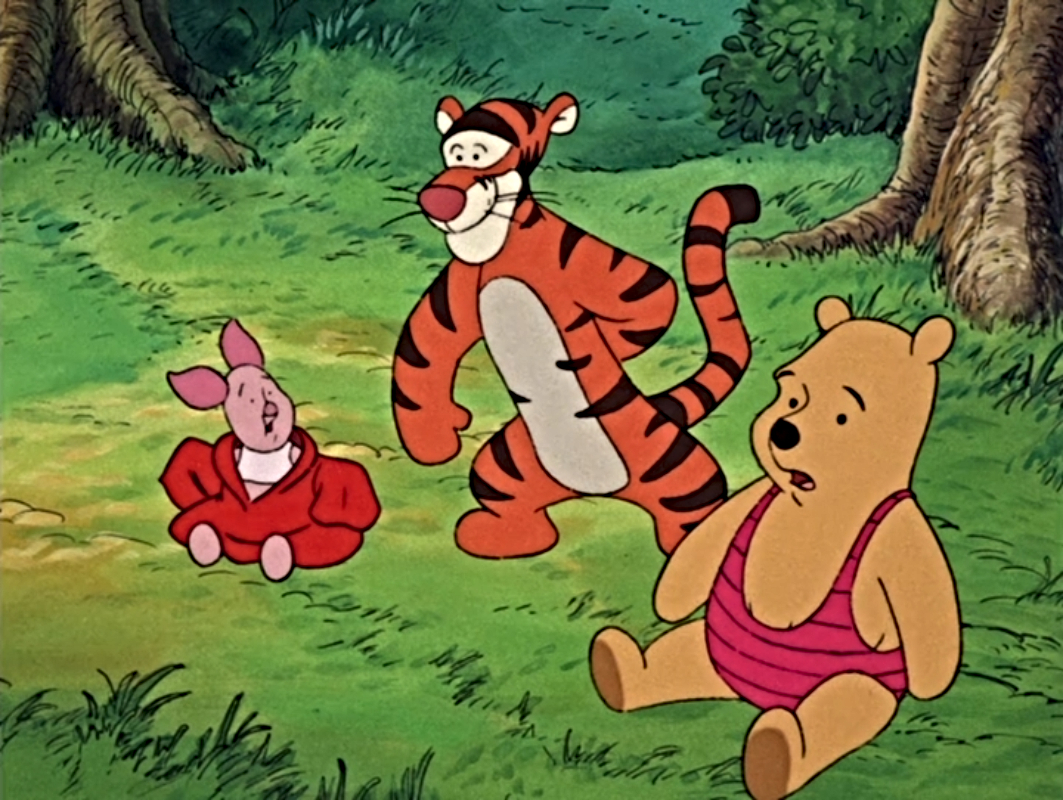
As a disclaimer, the “New Adventures” episode, “Luck Amok,” doesn’t technically mention St. Patrick’s Day. Because Season One, Episode Fifteen thematically revolves around luck, features four-leaf clovers, and displays lush, green-colored backgrounds, the story can easily reproduce the child-reminiscent understanding of St. Patrick’s Day. Tigger accidentally breaks Rabbit’s mirror, and Rabbit spitefully tells Tigger that he will be cursed with bad luck for seven years. The bad luck trope gets passed around from character to character, and Pooh and Piglet exchange outfits — producing the iconic picture above — in an attempt to confuse the bad luck! Usual Pooh shenanigans are paired with especially memorable imagery, making this a must-watch episode on the March 17th holiday.
April Fool’s Day
It’s not surprising that the “New Adventures” writers took advantage of the single most obvious Pooh pun in entitling the second segment of Season Three, Episode Six, “April Pooh.” Further, the entirety of the ten-minute short is teeming with affability, as each character finds themselves at the end of a prank by an unknown prankster. A highlight of this episode is that the animators took the time to design humorous costumes and props to dress Pooh and his friends. The Hundred Acre Wood animals search for the “April Fool” with heartwarming results. Honestly, you’d be hard pressed to find a more jovial April Fool’s themed episode to watch on the first day of April.
Easter
Springtime With Roo (2004) is a quintessential film to watch during Easter week for religious and non-religious people alike. This movie maintains a high-spirited energy throughout, bursting with a peppy Music Man-esque soundtrack including peppy songs like “Easter Day With You” and “The Way It Must Be Done.” Although the movie is marketed as Roo-centralized, older viewers will quickly realize that Rabbit’s crotchety, cantankerous behavior begins to resemble that of the Charles Dickens classic Scrooge, Ebenezer Scrooge. Thus, the spotlight re-centers from Roo wanting to celebrate his second Easter toward Rabbit’s dismissal of the holiday altogether in place of spring cleaning.
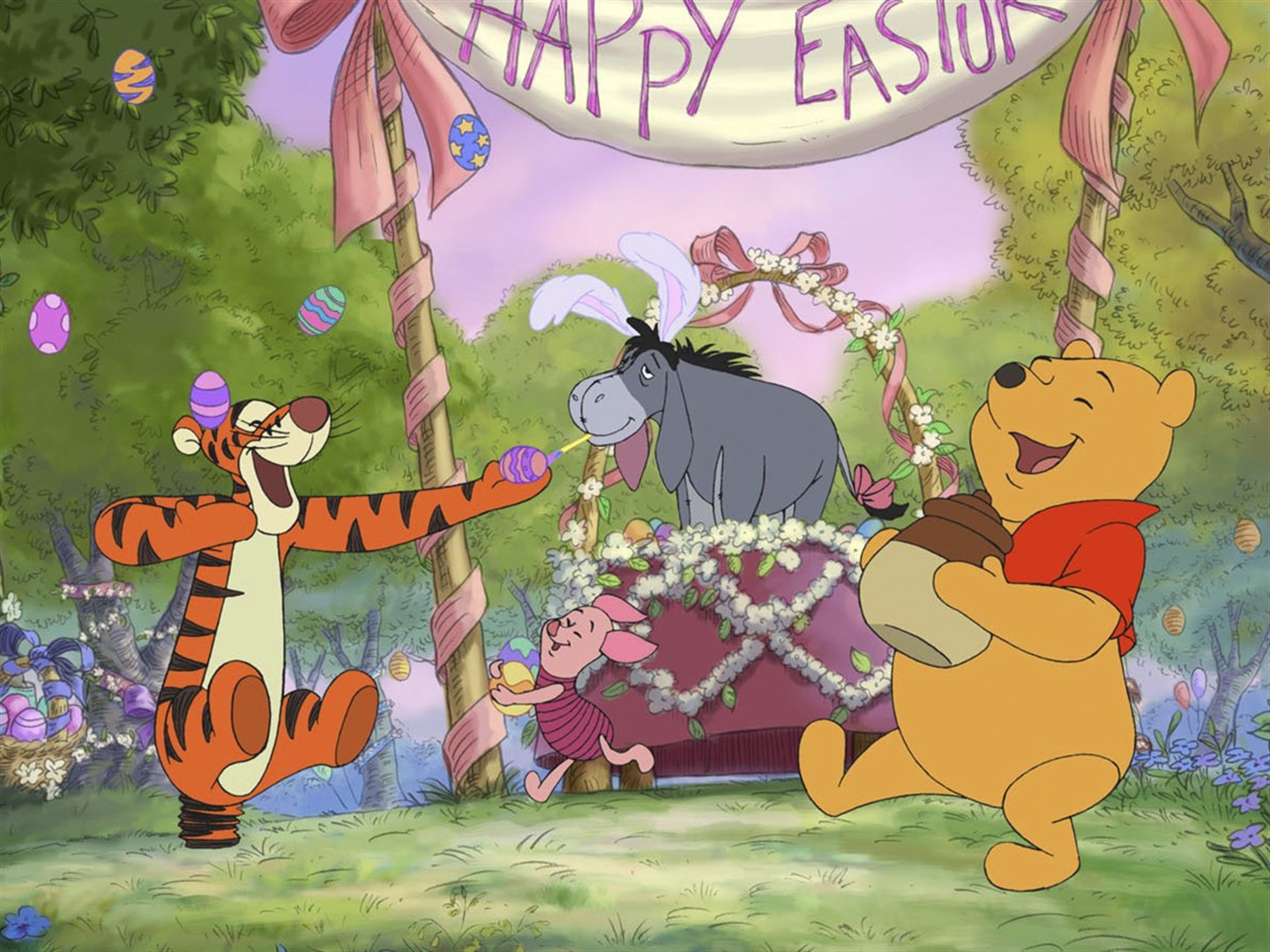
You won’t want to miss this spectacularly colored Easter retelling of A Christmas Carol. A rare, satisfied Eeyore will delight viewers as he brandishes his fluffy bunny ears to get into the Easter-egg-hunting spirit. Surprisingly, Tigger takes on a parental role with Roo and a guiding hand for Rabbit that adds emotional complexity to his character. Pooh also engages in a song and dance about his upcoming sneeze that will make you want to dance along with the fluffy bear.
Halloween
If you grew up in the 2000s, you’ve probably seen the 2005 animated film Pooh’s Heffalump Halloween Movie. A sequel to Pooh’s Heffalump Movie, this direct-to-video movie played on a constant loop on the Disney Channel during October in the 2000s. In retrospect, it’s far from the best Pooh movie. Regardless, this film deserves a certain amount of respect because it features long-time voice actor John Fiedler’s last performance as Piglet. Brave kids won’t be able to resist the allure of the films’ trick-or-treat Halloween night setting and stakes of Pooh-stealing goblins.
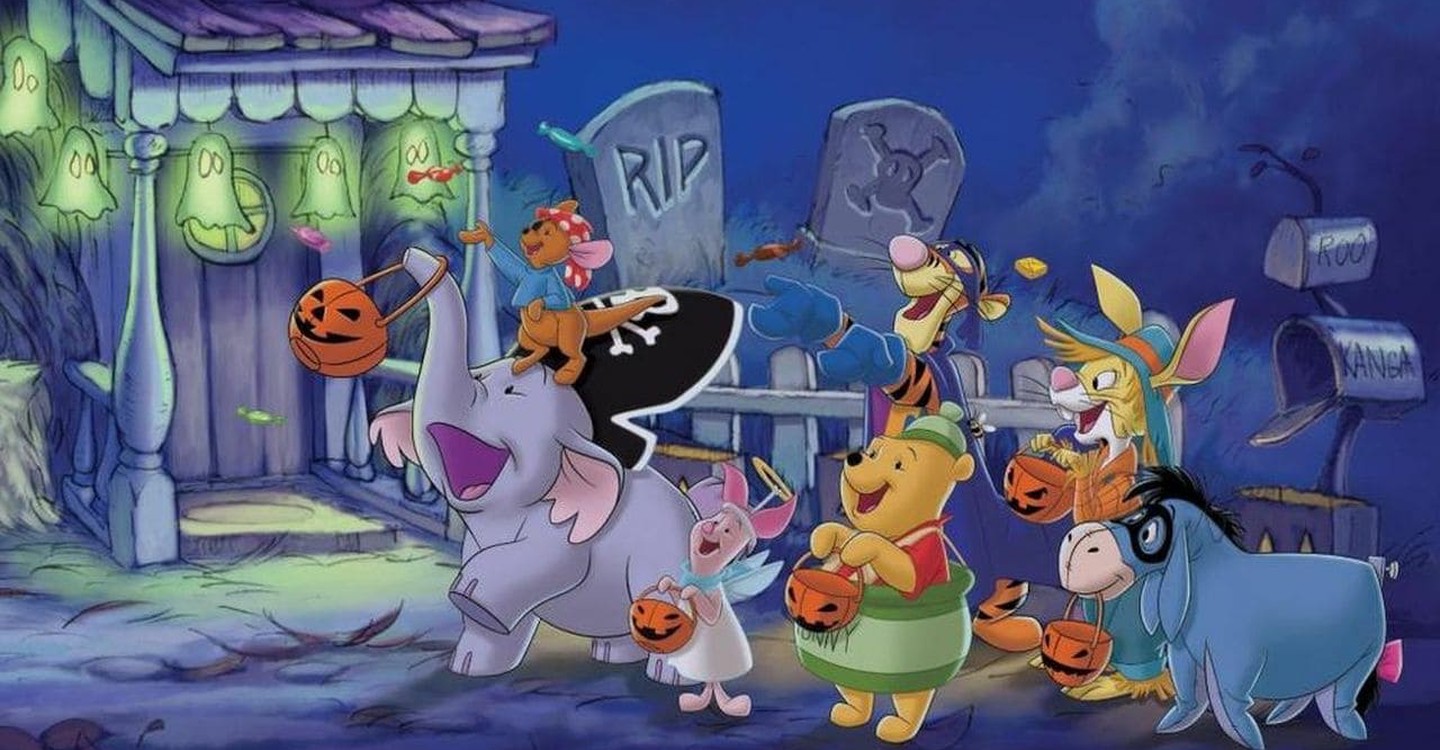
Tigger scares everyone — as usual — with the threat of a “Gobloon” that slinks from the shadows every Halloween to capture trick-or-treaters. Roo and Lumpy, the good-hearted purple elephant that made his debut in Pooh’s Heffalump Movie, endeavor on an adventure to capture the ill-wishing Gobloon. The character-appropriate Halloween costume attire for each Pooh character in the film speaks to the creative ingenuity of the artistic team. Whether the movie is objectively “good” — and whether the creepiness of some images will give your child nightmares — Pooh’s Heffalump Movie is worth the rental fee on Halloween, solely for the costuming designs. Who doesn’t want to see Pooh dressed up as a honey pot?
Your wallet should fear not, for several episodes of the “New Adventures” series can satisfy your — or your children’s — itch for wholesomely spooky Winnie the Pooh Halloween content. Season Two, Episode Two, “The Monster Frankenpooh,” is not only a fan-favorite segment, but the artistic freedom of scenery, costumes, and character modifications monstrously heighten visual satisfaction. Piglet, Rabbit, Tigger, and Gopher all gather around on a dark night to frighten one another with scary stories. Surprisingly, Piglet proves his eerie storytelling chops by regaling his friends with a loose retelling of the Frankenstein horror story.
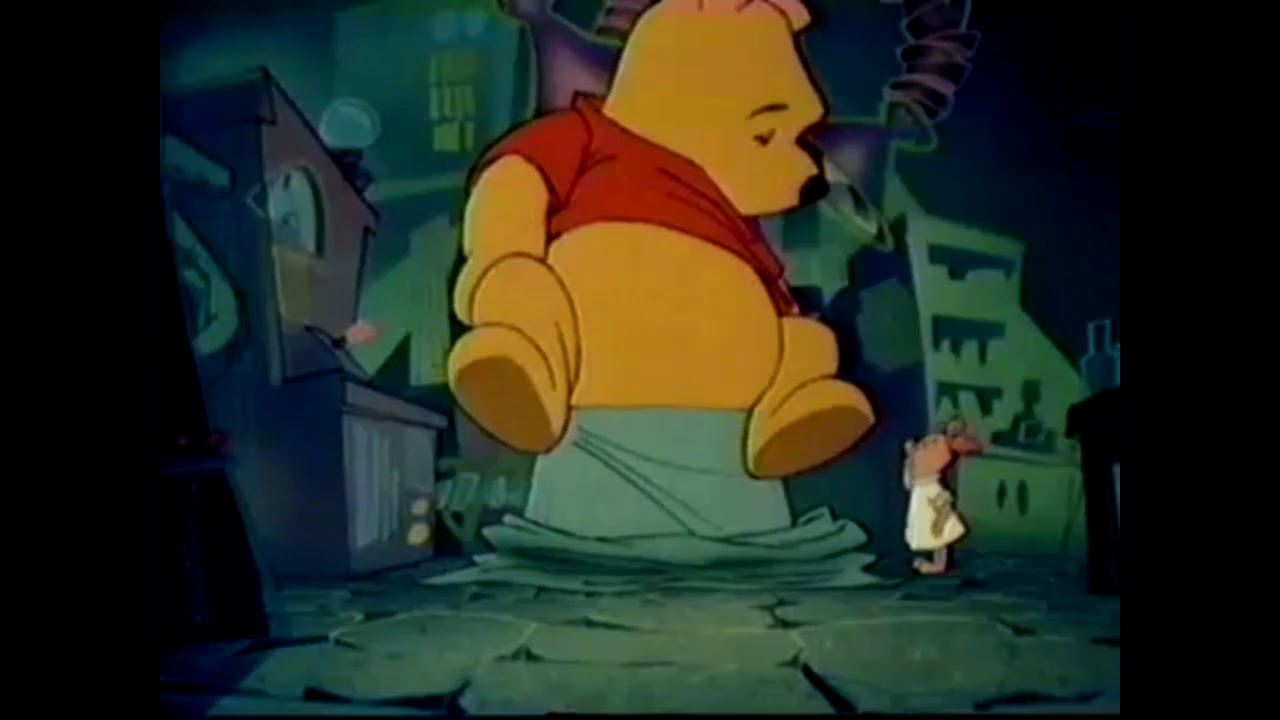
Jagged castle designs complement the light terror atmosphere in the tale. A thunderstorm bellows overhead on an exterior castle shot as the camera pans inside to reveal a scientist who looks nearly identical to Piglet — and wears an adorable Piglet-sized lab coat. When the glorious creation on the table is revealed, Tigger interjects in the story and comically increases the size of the “horrifying” monster, “Frankenpooh.” The stellar sound effects, breaking the fourth wall, and emphatic voice acting enhance the story’s drama. In addition, you can round off your Pooh-o-ween night with a five-minute short of Piglet running around like a ghost and terrorizing his friends in Season One, Episode Fourteen, “Things That Go Piglet in the Night.”
Thanksgiving Day
Winnie the Pooh: Seasons of Giving was marketed as a full-length animated special but essentially consists of a three-short amalgamation. Two of the shorts included, “Groundpiglet Day” and “Find Her, Keep Her,” are found in Season One of “New Adventures.” Sandwiched in between the shorts is the 1998 made-for-television special, A Winnie the Pooh Thanksgiving. The short fully caters to its Thanksgiving theme, featuring the preparation for a true Thanksgiving feast with Christopher Robin and his stuffed friends. Themes of togetherness, thankfulness, and co-operation enliven the heartwarming innocence of a childhood Thanksgiving. Spectacular art, dazzling colorwork, and facial expressiveness proves distinctive in comparison to other television Pooh specials.
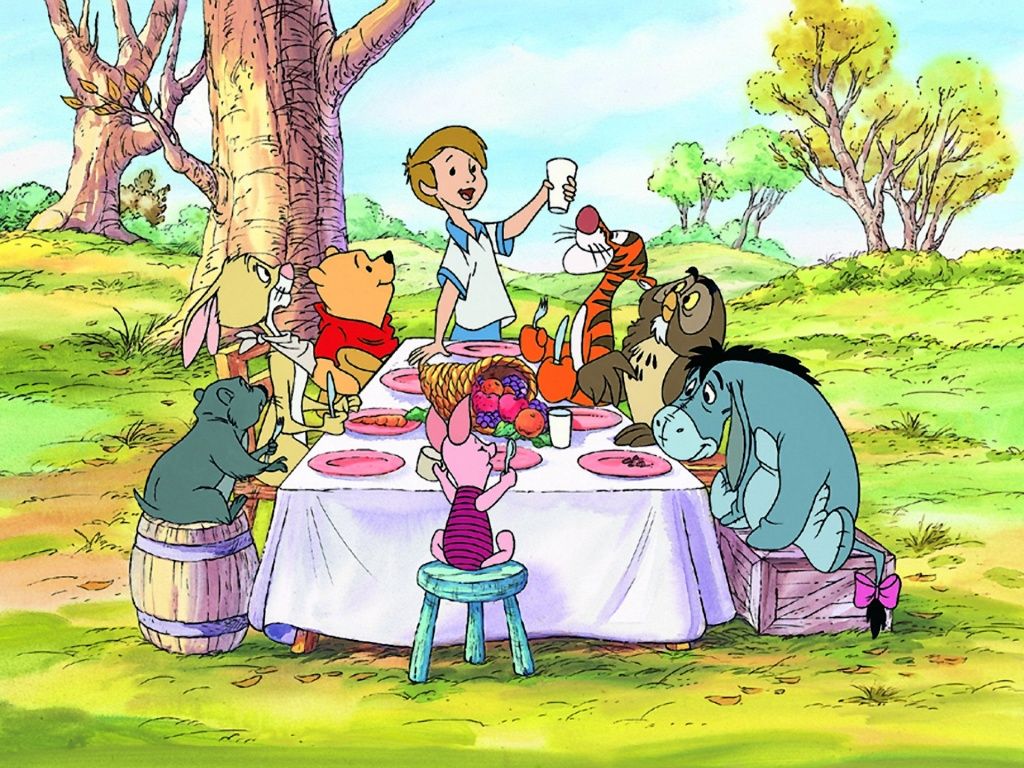
Unfortunately, you’ll only be able to watch the special while scarfing down your own Thanksgiving feast by renting the entire Seasons of Giving film. Since the other two shorts are watchable on Disney+, the $3.99 rental price makes the twenty-two minutes of A Winnie the Pooh Thanksgiving only truly worth the money if you have to see this Primetime Emmy nominated feature.
Christmas And New Year’s Day
A Very Merry Pooh Year (2002) is the ultimate, warm-and-fuzzy, feel-good holiday movie. Like The Many Adventures of Winnie the Pooh (1977), the film pieces together a previous Pooh holiday special, Winnie the Pooh and Christmas Too, with bonus scenes to cohesively tie it together with an additional New Year’s featurette called Happy Pooh Year. The film begins on Christmas Eve, where a befuddled Winnie the Pooh struggles to set up his Christmas tree. After a mishap, Pooh accidentally breaks the shelf where he was hiding a gift for his best friend, Piglet. While his friends outside beg Pooh to let them in his home, Pooh scrambles to re-hide the gift, leading to his later forgetfulness about the present at all.
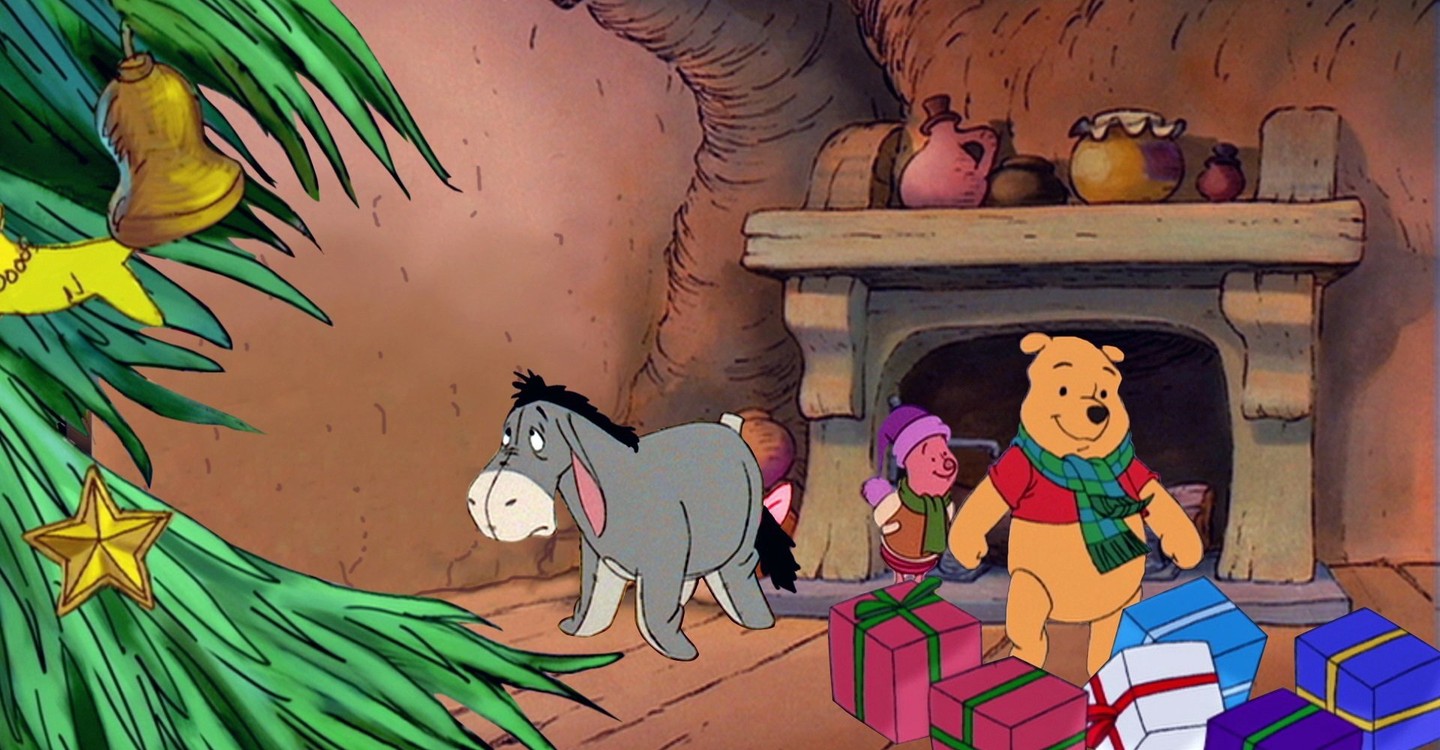
As the crew aids Pooh in his Christmas tree decorations, Rabbit tells Roo a flashback Christmas story that segues into a showing of the Winnie the Pooh and Christmas Too special. Many Christmas tunes are sung by the endearing voice actors, and the movie demonstrates the captivating joy of the holiday spirit. Pooh and Piglet exchange the sweetest lines of friendship with one another that reminds viewers to focus on the gift of companionship during the holiday. In the New Year’s portion of the movie, preparations for New Year’s go awry, and the animals decide to switch up their personalities in a misguided attempt to appease an angered rabbit. A Very Merry Pooh Year is special, poignant, musical, and an absolute comfort movie to turn on during the holidays.
Celebrate The Year With Pooh In The Hundred Acre Woods
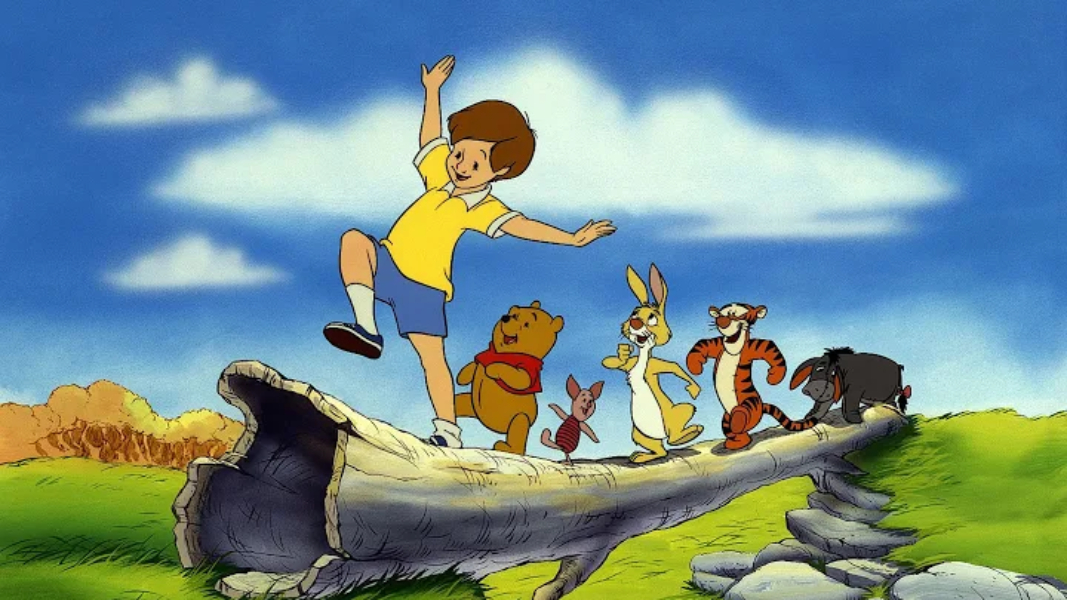
Sometimes, you want to relax, sit down, and watch media that effortlessly reflects the atmosphere of the current season or holiday. Winnie the Pooh and his friends in the Hundred Acre Woods extend their paws toward you and ask you to shed your anxieties for an hour or two while you revel in pure Pooh entertainment. Don’t forget to also celebrate your favorite honey-smacking bear during National Winnie the Pooh Day on January 18. In the parting words of Tigger, ta-ta for now!
